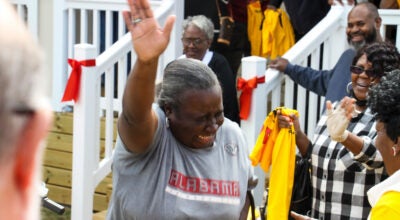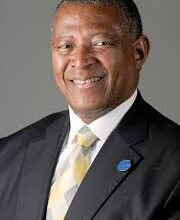SCS sees ‘significant’ improvement in latest state report card
Published 1:52 pm Monday, October 21, 2019
The Selma City School System (SCS) saw “significant” improvements after the release of the Alabama State Department of Education’s (ALSDE) Alabama Unified Report (AUR), which includes the Alabama State Report Card.
SCS received a 76, which is a C and is decided by several factors, including academic achievement, academic growth, chronic absenteeism and graduation rates and college and career readiness for high schools.
The school system has seen an improvement over the past three years going from a 68/D in the 2016-2017 school year to a 72/C in 2017-2018 and, finally, to a 76/C in the 2018-2019 school year. In all, there has been an 8-point gain in the past three years.
When broken down by individual schools, each has seen positive gains in grades over the past three years.
Cedar Park Elementary School went from a 57/F to a 69/D and, finally, to an 80/B, which is a 23-point gain.
Clark Elementary School went from a 64/D to a 70/C to a 73/C, which is a 9-point gain.
Edgewood Elementary School went from a 67/D to a 64/D to a 70/C, which is a 3-point gain overall.
Knox Elementary School went from a 66/D to a 67/D to a 69/D, which is a 3-point gain overall.
Sophia P. Kingston Elementary School went from a 56/F to a 73/C to a 71/C, which is a 15-point gain overall.
School of Discovery went from a 61/D to a 70/C to a 77/C, which is a 16-point gain overall.
R.B. Hudson STEAM Academy went from a 54/F to a 62/D to a 63/D, which is a 9-point gain overall.
Selma High School went from a 64/D to a 62/D to a 68/D, which is a 4-point gain overall.
“We are making progress,” said SCS Superintendent Dr. Avis Williams. “Selma City Schools is moving in the right direction. That is the resounding message that our new report card data sends. We have innovative practices in place at all of our schools. All of our leaders are engaged in terms of what it takes to improve outcomes for their scholars. This is good news for us. “
Williams reflected on when she first began her position at SCS.
“When I first started this position, we had three F’s and the highest grade at that time was a 76,” she said. “Moving to this year, where our grade is a 76, we have three B’s and our highest school is an 88. We had one school move from an F to a B in two years. I’m just really excited and proud of the work our school leaders are doing and the fact that they do have a laser-like focus to improve outcomes to our scholars.”
“I attribute a great deal of it to our principals at our schools and the support of the community and the hard work of the teachers,” Williams continued. “I can’t overemphasize the hard work of the teachers enough. At the end of the day, it is our teachers that have that one-on-one relationship with students and the hands-on approach to working with individual students and small groups of students.”
Williams said one of the accomplishments of the system has been implementing clear expectations for the system’s improvement and success.
“When I first got here, the one thing I noticed is that we didn’t have a clear expectation of what teaching and learning should look like,” said Williams. “We had what might be great practices or what might not be. We had no way of measuring it because we didn’t have a clear vision or plan. We had to have some systemic approaches. We had to establish someone at the district level to guide that and we created the Executive Director for Teaching and Learning position and also ensure that every school is represented in a teaching community team.”
“We just moved forward with a structural framework based on what research and evidence said is the best plan for academic outcomes,” continued Williams. “For us, that included strategic teaching and, this year, with explicit instruction making sure we have those high-quality, effective practices happening in our classroom. We created academic excellence visits where our principals own their data and are able to speak clearly to what is happening in their classrooms. We do walkthroughs with the principals and just talk about the great things that we saw that we can celebrate and any challenges and concerns that need to be looked at closer through coaching.”
Williams also said a philosophy of the system has been to trust the process.
“Teachers are professionals and they want to be respected as professionals,” said Williams. “I certainly understand that and that change is hard. We had to do a better job explaining the why and do a better job including teachers in a process.”
“I formed a teacher advisory council that will help include teachers in the process when we’re making decisions that will impact this data,” continued Williams. “We have a strong group of teachers and an amazing group of instructional coaches in our schools. The one thing we have in common is that we love our scholars and that we want them to have the best shot at success and we know that education is the way to do that.”
The Five-Year Strategic Plan that was implemented last year was another big step for the system.
Williams said it was a key component to recognizing what success looks like in the school system.
“One of the things we did was create core values,” said Williams. “We use those to guide how we work and part of it was also an updated mission and vision and our vision is to be a documented model school district. We can’t do that if academic outcomes are not improved. We have our STEAM academy at R.B. Hudson, where we look at it as a demonstration site for all things STEAM. All of our elementary schools have formed Academies of Academic Excellence that have specific areas of focus that are driven by student literacy, as well as interdisciplinary studies. With our high school, we are constantly seeking opportunities for our scholars to be college and career ready, from opportunities in credentialing to apprenticeships to our guidance counselors working with our scholars with applying for colleges, knowing about armed forces options and work options.”
College and career ready is a part of the score that Williams said Team Selma is focused on.
“There are several things that a scholar can have to be college and career ready,” Williams said. “Basically, they have to have just one area they can say they achieved in. It can be a qualifying score for an AP or IB Exam, being credentialed in an area, admitted into the military or scored a silver on the work keys exam or a qualifying score on the ACT. There are various ways and it is an area that we have got to continue doing a better job in. Our graduation rate also increased to 89 percent and that is up from what was previously three years ago an 83 percent.”
“Our college and career readiness rates should match that,” Williams went on. “We are graduating students and they should also be college and career ready. Right now, we do have a deficit between those two measures. We just hired a new coordinator for college and career readiness and he has a laser-like focus on making sure we don’t miss any opportunities for our scholars to obtain the college and career readiness indicator before they graduate.”
Qualified teachers are another priority for the system.
“One thing I’m excited about as we look at this data, our areas of celebration where we can identify model classrooms and teachers who are demonstrating those exemplary practices can share with others,” said Williams. “We have some amazing teachers in our district and we want to highlight them and encourage them to share our practices with other teachers in the district and beyond.”
Williams hopes the improvement continues.
“We are so close to a B now,” she said. “We are of course eyeing that and we are using the data as a learning opportunity to see where we can improve in the short term, as well as those areas that may take more long-range planning for improvement.”





